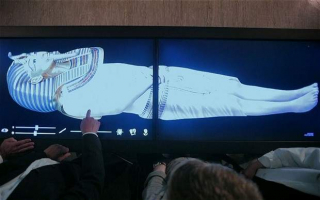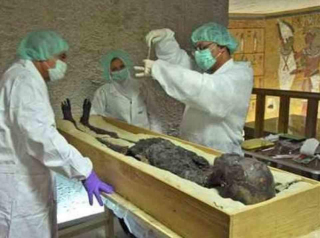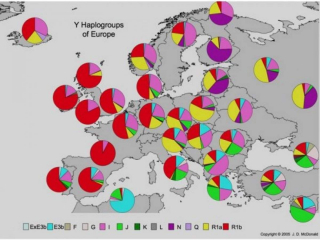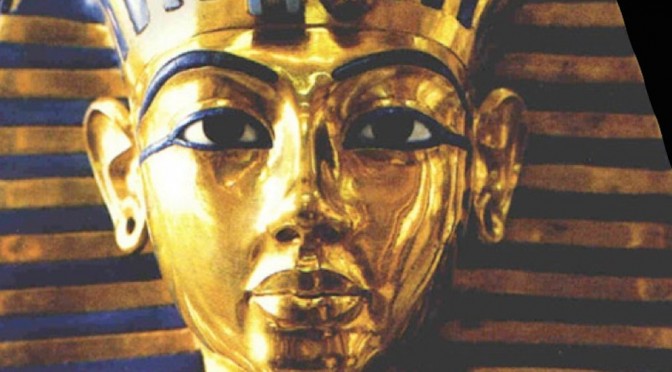Discovery Channel
 In the year 2009 extended DNA-tests were carried out on the mummy of Tutankamun and other members for his family as part of a Discovery Channel feature. These had only partially been published in February 2010 and have still not been fully published.
In the year 2009 extended DNA-tests were carried out on the mummy of Tutankamun and other members for his family as part of a Discovery Channel feature. These had only partially been published in February 2010 and have still not been fully published.
Despite several demands, the full results of the Y-DNA tests have apparently been shut away.
IGENEA
The Swiss DNA testing Laboratory IGENEA was able to reconstruct the Y-DNA profile of Tutankhamun, his father Akhenaten and his grandfather Amenhotep III with the help of a frame by frame analysis of a documentary covering the DNA testing on the Discovery Channel.

IGENEA claims that through a frame by frame analysis of a Discovery Channel TV Presentation it had discovered that the paternal DNA of Tutankhamun was Haplogroup R1b1a2. This genetic group is typical of the Atlantic Modal Haplotype (AMH) which is otherwise known as the “Celtic” gene.
This finding is more than a little controversial. For many people it is almost unbelievable.
DNA testing
The Discovery Channel, like many other commercial channels, frequently makes use of “stock footage” in order to keep costs down. Is it possible that the DNA tests shown were from some other DNA sample? It seems unlikely as there is little doubt that the extraction sequences were actually within the tomb in Egypt. Why would they then insert stock footage for the testing? Nevertheless there has been no official release of the results and the german geneticists who carried out the tests are very critical of iGENIA’s “lack of professionalism”.
Ignoring that small problem, the examination of the findings and combination with other DNA research indicates that the R1bia2 group and subsequent mutations arose in the Eastern Mediterranean, migrated to the Pyrenees and from there spread up and down the Atlantic coast from North Africa to the Orkneys.
The Basque Anomaly
 The population samples,on which all the statistics are based, are currently too small to give great confidence in the outcomes.
There are significant differences in findings between different research organisations.
Currently the reasons for submitting to DNA testing are predominantly personal.
There is therefore a suspicion that far too many of the samples are concentrated in the upper socio-economic levels.
Civil libitarians are very concerned to prevent wide scale testing.
However in ten years time the sample sizes will be much bigger and the samples more representative. In the meantime what is available gives a snapshot of current knowledge and some valuable information on which to base further speculation.It raises enormous difficulties as the Celtic languages are Indo-European but the language of the Basques was and still is non Indo-European.
The population samples,on which all the statistics are based, are currently too small to give great confidence in the outcomes.
There are significant differences in findings between different research organisations.
Currently the reasons for submitting to DNA testing are predominantly personal.
There is therefore a suspicion that far too many of the samples are concentrated in the upper socio-economic levels.
Civil libitarians are very concerned to prevent wide scale testing.
However in ten years time the sample sizes will be much bigger and the samples more representative. In the meantime what is available gives a snapshot of current knowledge and some valuable information on which to base further speculation.It raises enormous difficulties as the Celtic languages are Indo-European but the language of the Basques was and still is non Indo-European.
For the last 100 years the accepted history of Europe has been shaped by students of language. Now suddenly, thanks to genetics, their vision is being challenged. Geneticists hold sway.
The consensus scientific, unbiased opinion is that this is fact, but there are a wide range of opinions as to where in Eastern Mediterranean the people carrying this DNA originated. The favoured opinion is Anatolia ( modern Turkey) not Egypt. Their ancestors however almost certainly came from the far east, from what we now think of as China, Indonesia and Japan. That itself sounds unbelievable? Geneticists though they know this seldom mention it. Neither to anthropologists.
If the Basques are at very centre of this enigma then consider this intriguing fact. The closest language to the basque language, judged by the same criteria used to develop the concept of and into European family of languages is Ainu, the aboriginal Japanese language.
